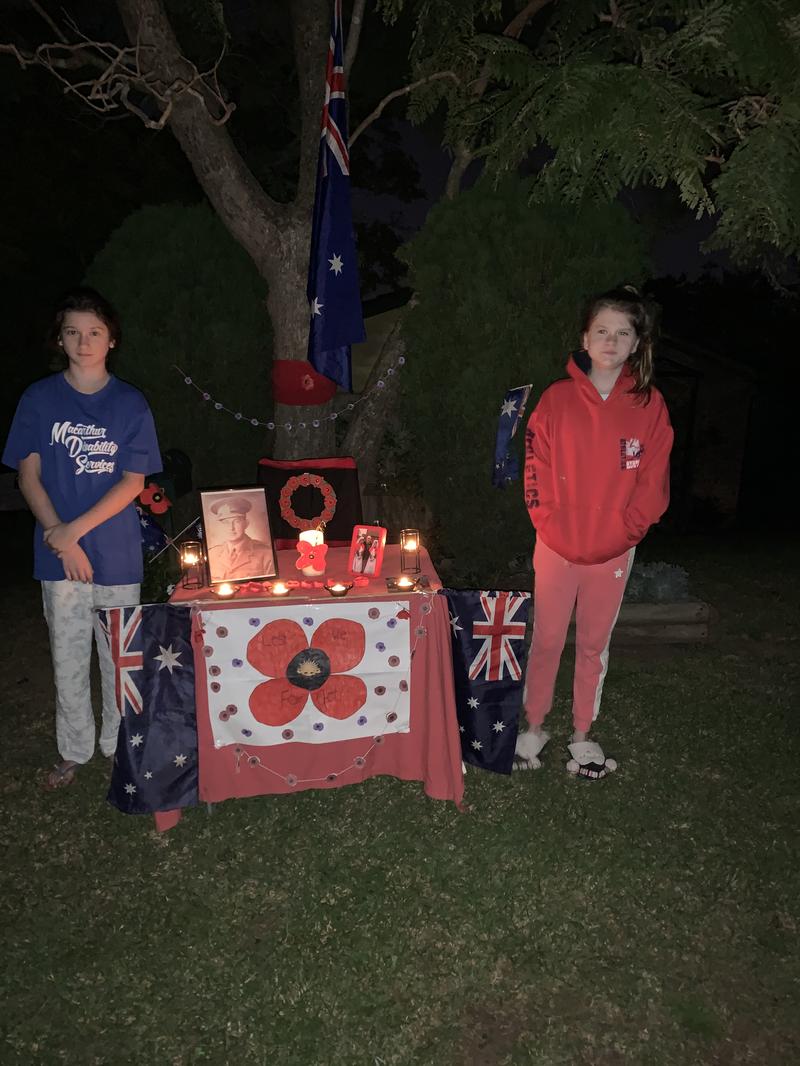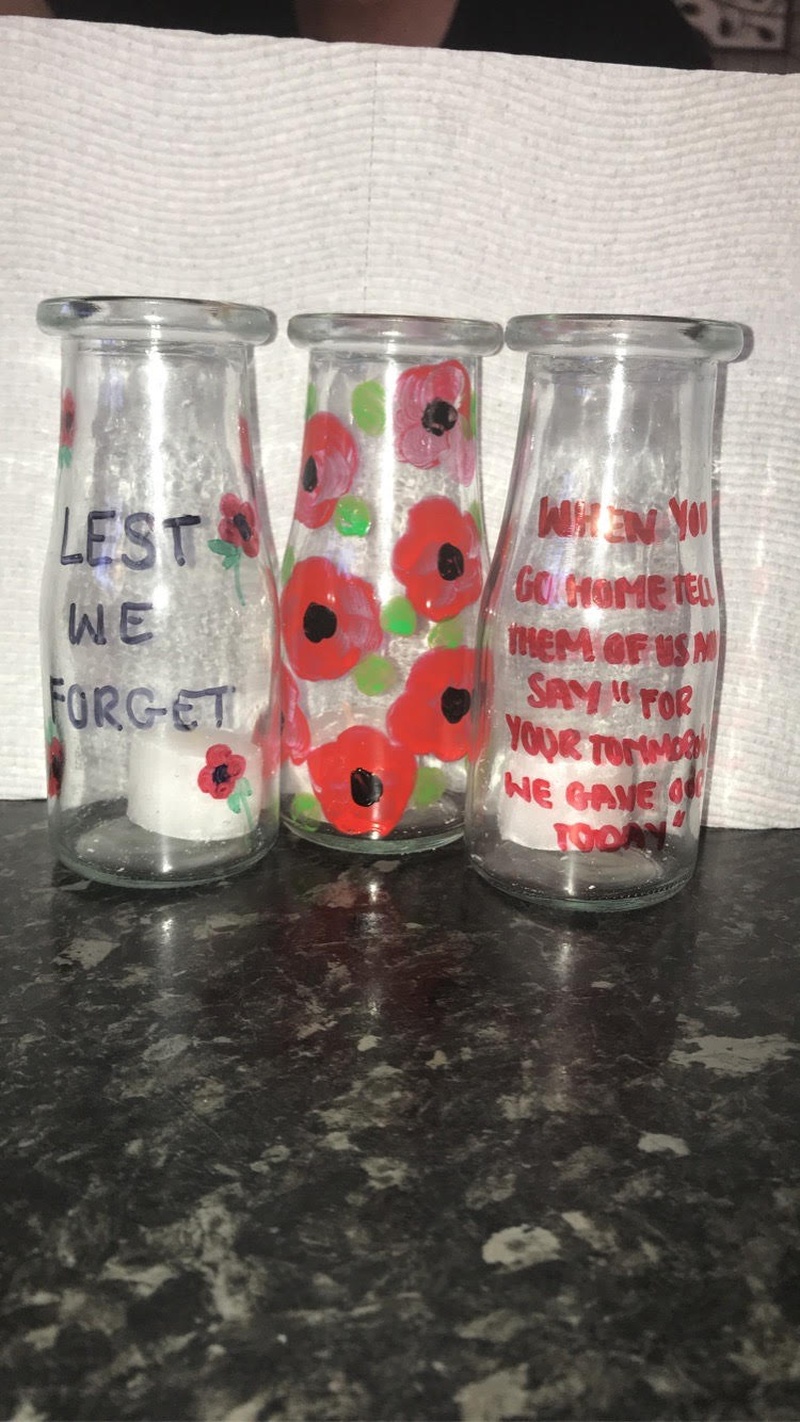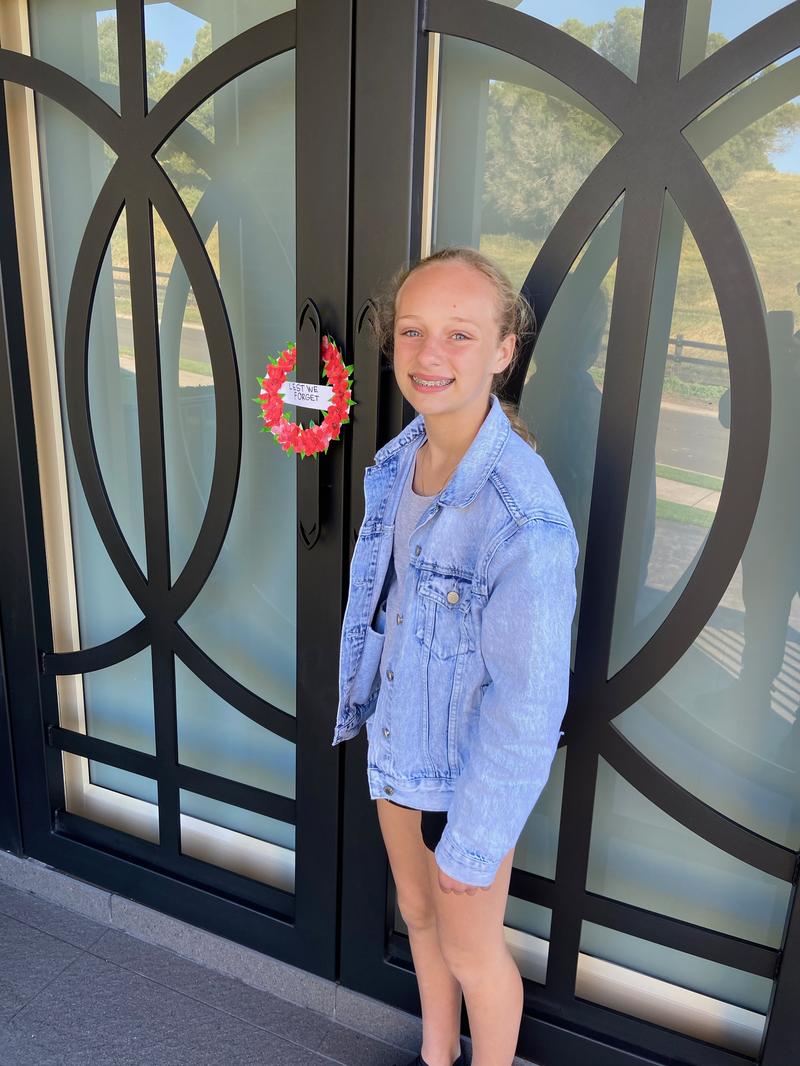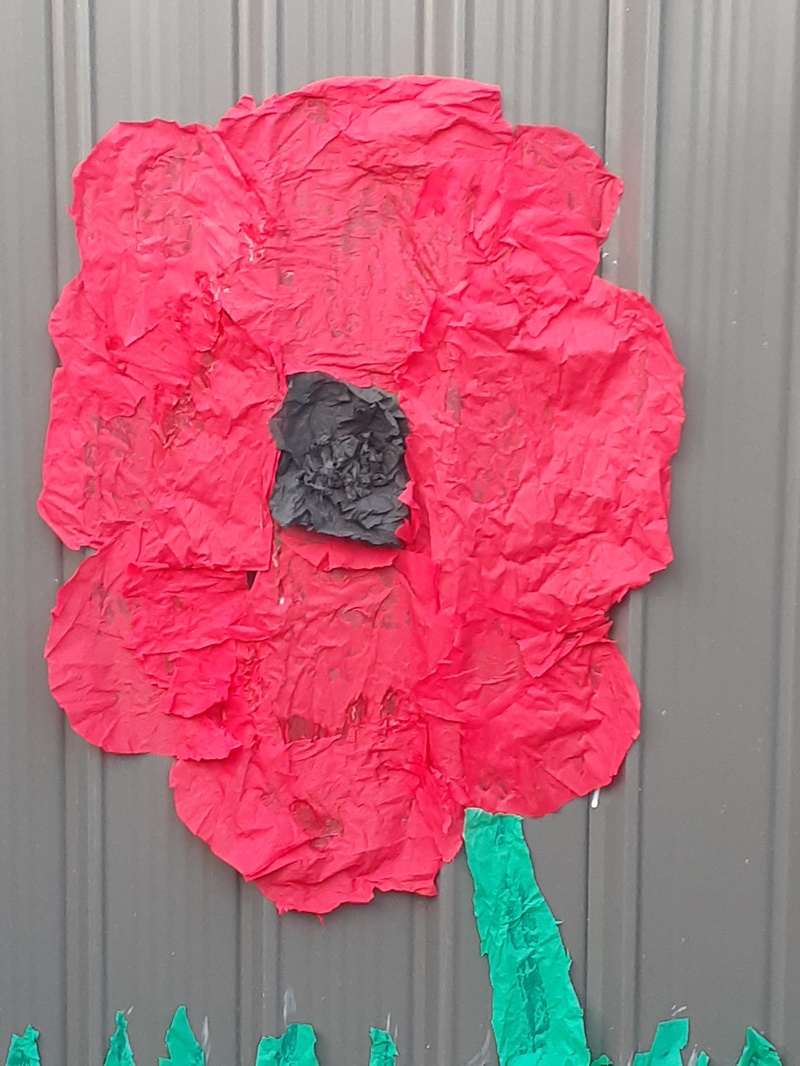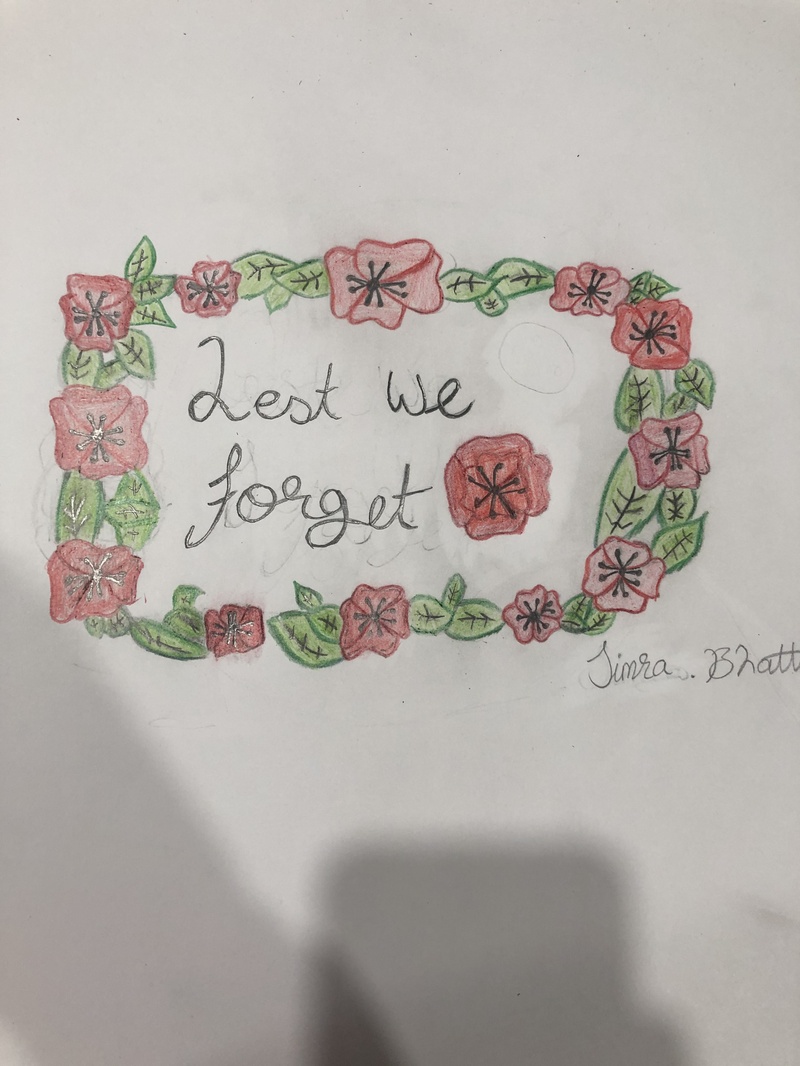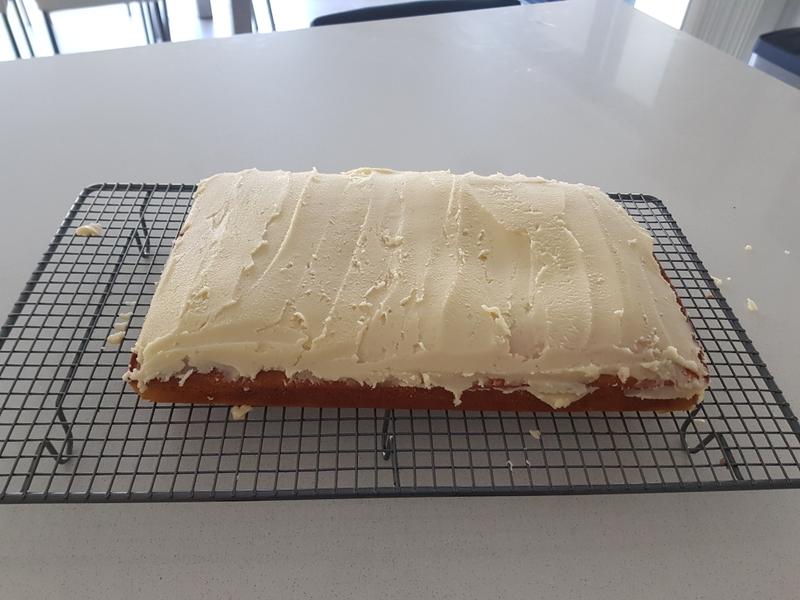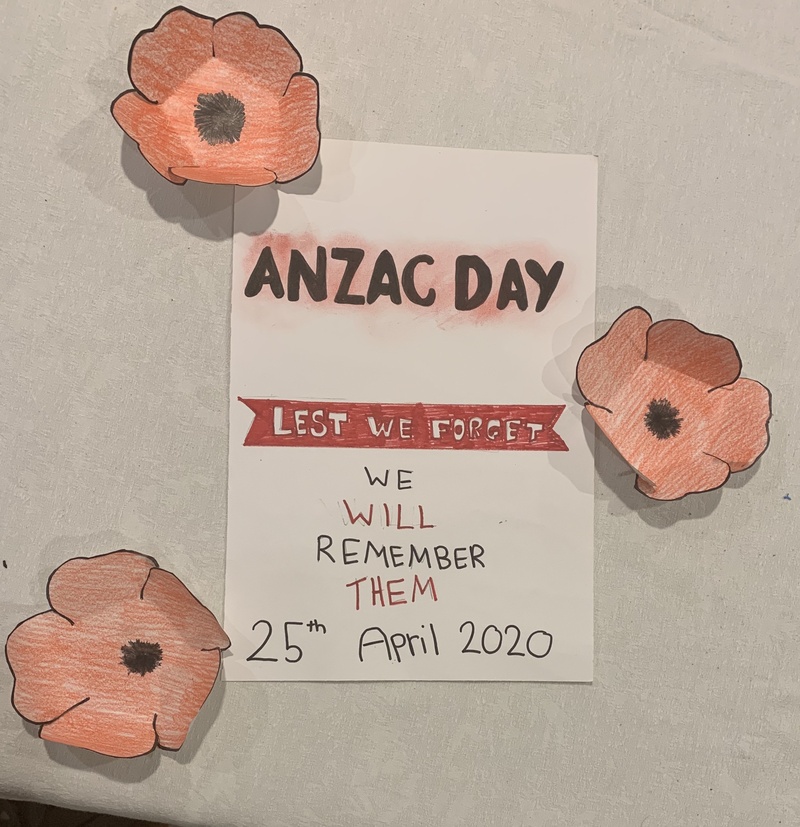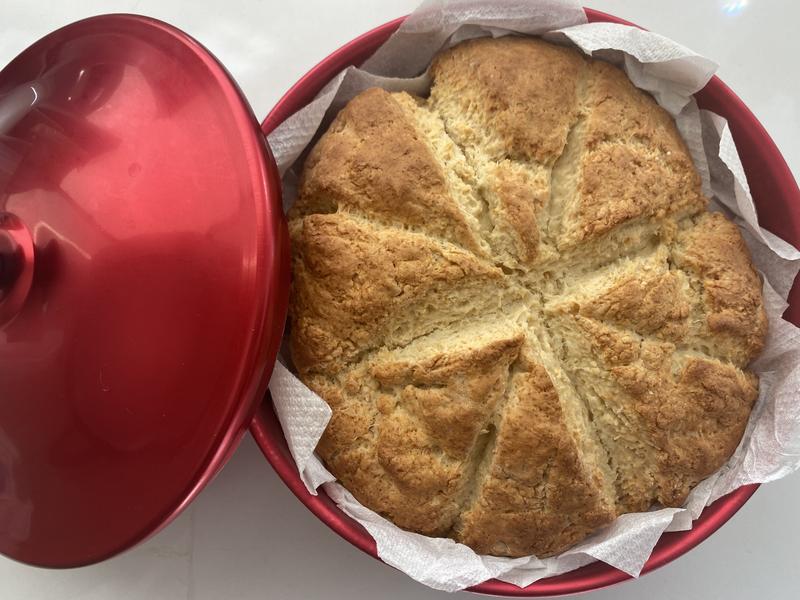Anzac Day at Home
This year’s Anzac Day was unique as COVID-19 restrictions prevented us from physically gathering together as a community to remember those who have served our country. However, we ‘virtually’ connected in two ways, firstly, our ‘Anzac Day at Home’ activities during the holidays and, secondly, our livestreamed assembly this week.
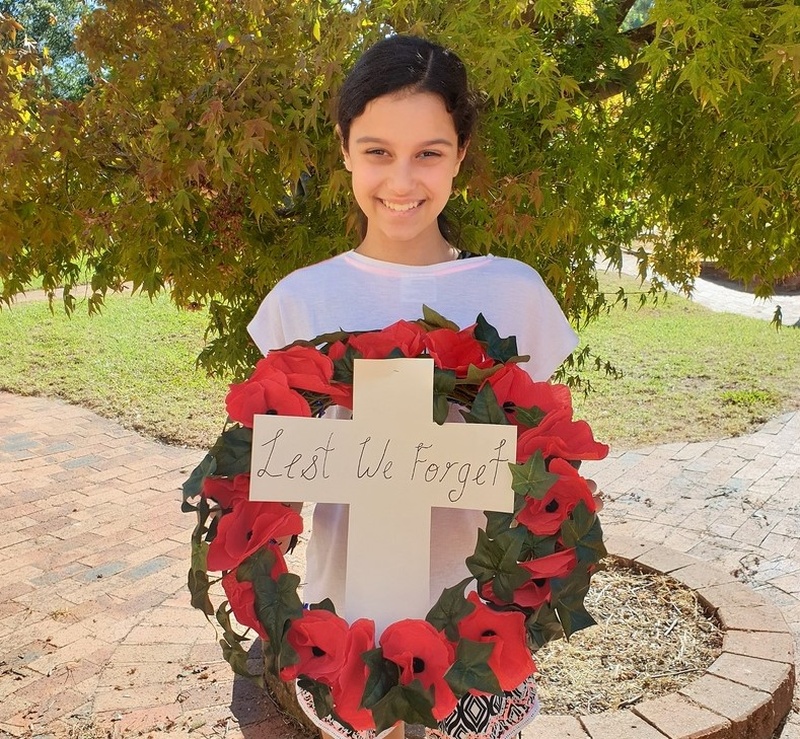
Sophia S Paper Poppy Wreath
During the recent holidays, the students and staff were provided with a range of activities that they could make from home to commemorate Anzac Day. Many of our students used recyclable materials to make poppies or Anzac inspired decorations for their homes. Lillian A made a beautiful paper poppy wreath from paper. Oreoluwa A constructed a life size poppy on her fence and Simra B made a lovely poppy photo frame insert. Mrs Tannous also made a lovely tribute with paper poppies and milk bottle lanterns. It was great to see Year 12 also get involved and Kayla B painted glass vases with poppies and the famous Kohima epitaph. Sophia S of Year 7 went over and beyond by not only creating a gorgeous poppy wreath from paper flowers, but also creating a step-by-step video for her peers. This can be viewed on Youtube at https://youtu.be/7jtCHnr5waE
Students were also encouraged to conduct their own ‘driveway at dawn’ services at home and send photos to the College. Bronwyn and Laura Z and Gabrielle V, all in Year 8, decorated their front lawns and conducted their own ‘driveway at dawn’ services. Chelsey-Rae H and her little sister conducted an entire service and Chelsey played ‘The Last Post’ on her clarinet, please see the following link for a video of the service https://m.facebook.com/story.php?story_fbid=3660912643980233&id=100001845997925
Many of our staff and students sent in photos of their Anzac inspired cooking creations as well. Ava M, Bronwyn Z, Mrs Reader, Mrs Durrington and Ms Boulatsakos baked beautiful Anzac biscuits. Madison W made ‘Anzac Cake’ and Olivia L made some traditional Australian damper. Sophia S of Year 7 also created an exceptional video on how to make chewy Anzac biscuits which can also be found on Youtube at https://youtu.be/KfUVB5LoGtU.
Each year we normally have an Anzac Assembly at the beginning of Term 2. However, this year we had a ‘virtual’ assembly. We acknowledged that this year marks the 75th anniversary of the end of World War II and 40,000 Australians who made the ultimate sacrifice in this conflict. We paid tribute to our friend of the History Club, Mr Bert Collins, who is 104 years old and served in New Guinea.
Caitlin R in Year 8 gave a beautiful speech about her great grandfather, H.J.Daley, (who Campbelltown Library is named after) and who served in World War II, spending time in the notorious Changi POW camp. Her speech was accompanied by photographs from her family collection. Here is a transcript of her speech:
‘What does Anzac Day mean to me? To me Anzac Day means to remember and commemorate all of the soldiers, sailors, airmen and nurses that fought to protect our country so we can enjoy the freedom we have today.
To me it also means remembering my ancestors that were called to war such as my Great-Grandfather, Harley James Daley, who was a soldier in the Australian Imperial Force (AIF) during World War Two.
Harley James Daley was born on 19 March 1906 in Wilberforce New South Wales. He enlisted with the AIF on 13 June 1940 at the age of 34. At the time he enlisted, he had been employed in local government for 20 years, working for Colo Shire Council, Lane Cove Municipal Council and Ryde Municipal Council. In December 1930, he joined the ranks of qualified clerks and, in March 1931, was appointed Town Clerk of Ingleburn Municipal Council.
Before Harley joined the AIF, he married Gleam Derriman on 17 October 1931 at the Ingleburn Church of New England. The couple had two daughters, Delysia and Cheryl (my Nan). Whilst I never got to meet my Great-Grandfather, I was fortunate to have six years with my beloved Nanna before she died at the age of 102 years!
Before being captured, Harley served as Orderly Room Sergeant for the 2/20 Battalion Headquarters. He was attached to AIF headquarters, which was responsible for its own administration. His duties involved travelling daily by bicycle to Malaya command headquarters to adjust movement in and out of the area, including hospitalisation and submission of ration statements.
Harley was a Prisoner of War from February 1942 to August 1945, one of thousands of Australian infantrymen captured by the Japanese in a lightning raid on North Malaysia. For 3 ½ years he was held at various camps on the Island before being transferred to Changi. Harley, a Warrant Officer, was also in charge of 200 men in one room in Changi Prison. The men received no food parcels, no mail and they had no beds.
Harley kept a diary which he managed to keep hidden from the Japanese by burying it each day because if he was found with it, the Japanese would have killed him. The diary is important because it helps tell the stories and experiences that Harley and other soldiers faced.
In the diary there are many entries from when he was a Prisoner of War. An example of one is Friday 13 March 1942 when on this day he wrote:
“I wondered what this day would bring forth as I had always considered 13 my lucky day – enlisted 13/6/40. Moved to Wallgrove to NCO school 13/7/40. Returned to Bathurst from final leave 13/1/41 and here I was 13 months later.
At about 10 am we were told we were moving to the other side of Singapore and off we went on foot, leaving in the truck all gear we did not want to carry. After a short walk we were dumped into trucks and unloaded at Chatsworth Av, where we sorted out our sections and started a long walk across the golf course where we had to dodge five bombers and plenty of artillery fire. It was during this march that 27 bombers unloaded their bombs close at hand and what a roar. You clutch the ground as if your life depends on it and so it does. A party of Indians gave us some tea, during the march and we were able to get some tinned food from a lorry.
In the later afternoon we reached our destination at the rear of Tanglin Barracks and took up our positions without being able to dig in.”
Also in his diary is an excerpt of the war diary of Alexandra Military Hospital. A statutory declaration, written by Harley on September 15, 1981, tells of how he came into possession of the war diary of Alexandra Military Hospital, during his imprisonment at Changi:
"Representatives from all POW units assembled at Command HQ daily. A Corporal at Command HQ asked if I had seen the war diary of Alexandra Military Hospital, which is of course most unusual, that any person other than senior officers of the unit concerned would see such a diary. When I answered 'NO', he asked if I would like to see it, to which I replied 'YES'. "
"On my next visit, he handed me the war diary which he had 'borrowed', and I placed it inside my shirt and cycled back to camp. I obtained the use of a typewriter and copied the last three days of the diary of the hospital following the invasion by Japanese forces.
Near the end of World War II, rations for prisoners were down to 8 1/2 ounces of rice a day and greens, most of which were the tops of sweet potatoes. The rice was cooked in sea water. Harley spoke candidly about the devastating impact such rationing had on the health of soldiers in his diary, stating "The men working on the Burma Railway were just skeletons. I had one friend who weighed just 90 pounds." Ninety pounds is just 40 kilograms – which is smaller than your average 13 year old!
When Harley returned home at the end of the war, he resumed his position with Ingleburn Municipal Council. Upon amalgamation of Ingleburn and Campbelltown Municipal Councils in 1948, he was appointed Town Clerk at Campbelltown Municipal Council (now Campbelltown City Council).
It is said that Harley ran the Council with great efficiency, which helped facilitate Campbelltown's transformation from a small country town of 8000 people to a burgeoning city.
He made a significant contribution to our local area through his role with Council and his service to many local organisations. In recognition of his significant contribution to the development of Campbelltown, the original city library was renamed the HJ Daley Library. The name was retained when the new library, located on the corner of Camden Road and Hurley Street, was opened on 23 March 1991, by Mayor Jim Kremmer.
This Anzac Day, my family and I will stand at the end of our driveway with a lit candle to light up the dawn and remember not only my Great-Grandfather Harley Daley but all the soldiers, sailors, airmen and nurses that have fought in all wars to protect our country.
In the assembly we also looked at the ways our College community commemorated Anzac Day at home. Lest We Forget. Until next Anzac Day…
Fran Musico Rullo - HSIE Teacher
